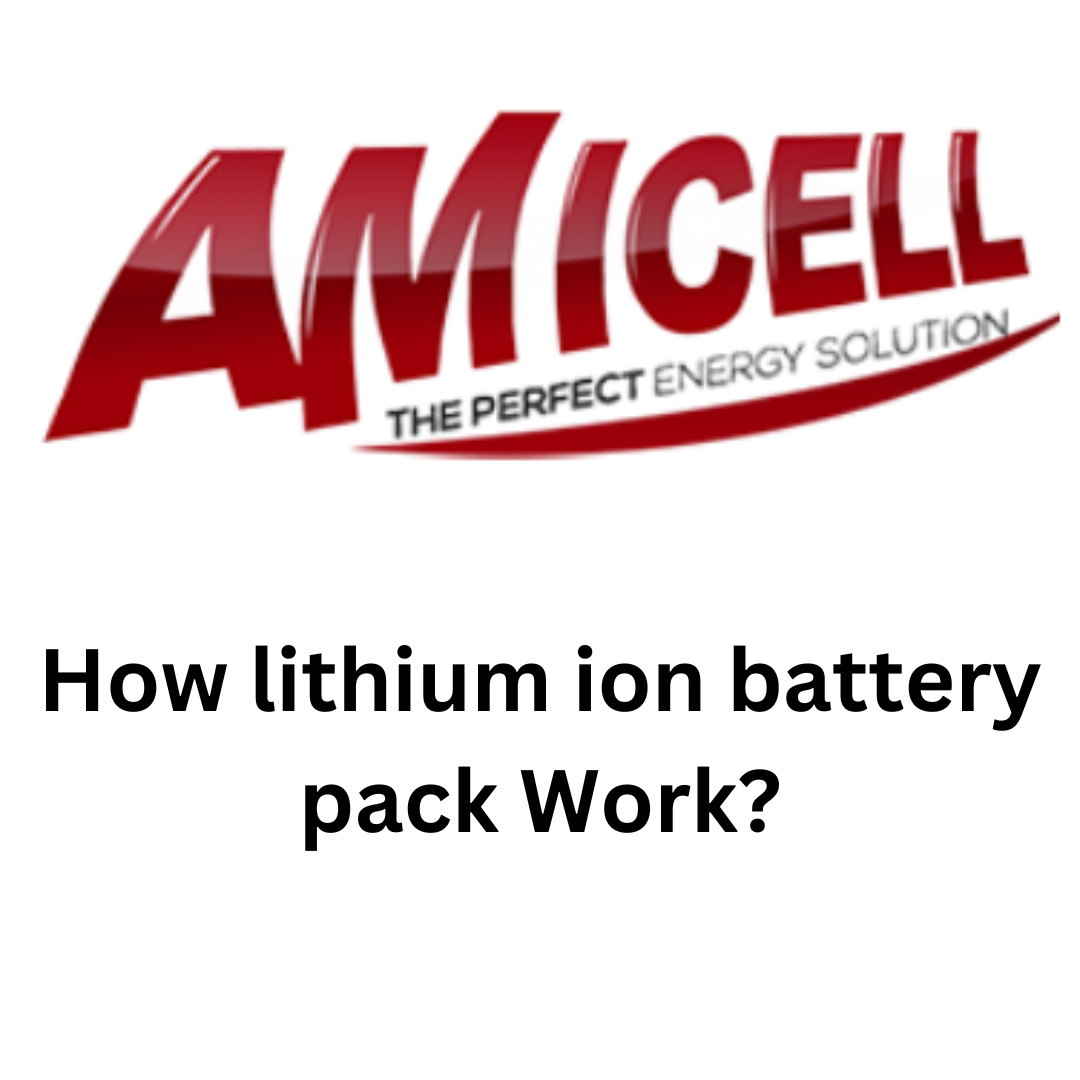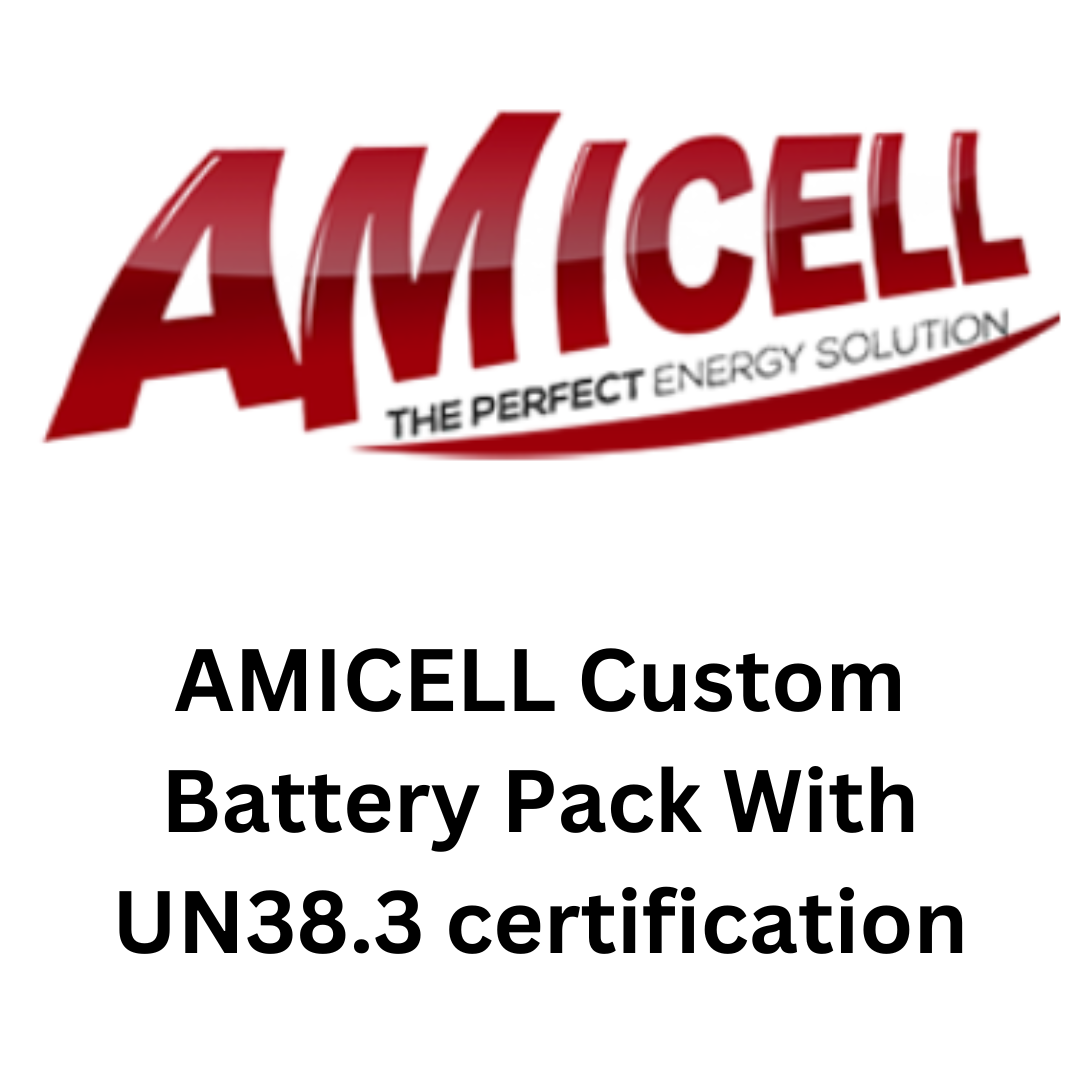How Lithium Ion Battery Pack Work?
Lithium-ion batteries are a popular choice for powering various devices due to their light weight, high energy density, and rechargeability. They consist of several key components, including the anode, cathode, separator, electrolyte, and current collectors. The anode and cathode store the lithium ions, while the electrolyte facilitates the movement of positively charged lithium ions between the two electrodes.
The separator prevents the flow of electrons inside the battery. During the charge/discharge cycle, lithium ions move between the anode and cathode, generating a flow of electrons and providing electrical current. Energy density and power density are two important concepts to consider when evaluating battery packs. Energy density refers to the amount of energy a battery can store in relation to its weight, while power density refers to the power generation capacity of the battery per unit of mass.
The Department of Energy’s Vehicle Technologies Office (VTO) focuses on increasing the energy density of batteries while maintaining an acceptable power density. Lithium-ion batteries have come a long way since their inception in the early 1970s, with ongoing innovations in design and manufacturing by companies like Amicell Energy Systems. The evolution of lithium-ion batteries has been driven by early challenges and breakthroughs, leading to their commercialization and widespread use in various industries.
- Lithium-ion batteries are lightweight and have a high energy density.
- The key components of a lithium-ion battery pack include the anode, cathode, separator, electrolyte, and current collectors.
- The charge/discharge cycle of a lithium-ion battery pack involves the movement of lithium ions between the anode and cathode.
- Energy density and power density are important factors to consider when evaluating battery packs.
- Lithium-ion batteries have evolved over the years due to innovations and breakthroughs in design and manufacturing.
An Overview of Lithium Ion Battery Packs
Lithium-ion battery packs are widely used to power various devices, ranging from laptops and smartphones to electric cars. They offer several advantages, including high energy density, lightweight construction, and the ability to recharge.
These battery packs consist of multiple lithium-ion cells connected in series or parallel to meet the required voltage and capacity specifications. The cells within the battery pack work together to provide the necessary power. Battery management systems (BMS) are used to monitor and control the charging and discharging of the battery pack, ensuring efficient and safe operation.
Lithium-ion battery packs have become a popular choice in many industries due to their superior performance and reliability.
| Advantages of Lithium Ion Battery Packs: |
|---|
| High energy density |
| Lightweight construction |
| Rechargeable |
Understanding the Components of a Lithium Ion Battery Pack
In order to comprehend how a lithium-ion battery pack works, it is important to understand its various components and their roles. These components include the anode, cathode, electrolyte, separator, and current collectors. Let’s delve into each of these components:
The Role of the Anode and Cathode
The anode and cathode are integral parts of a lithium-ion battery pack. The anode, usually made of graphite, serves as the storage site for lithium ions during the charging process. On the other hand, the cathode, made of a metal oxide, receives the lithium ions during the discharge cycle.
Importance of the Electrolyte
The electrolyte is a liquid or gel-like substance that enables the movement of lithium ions between the anode and cathode. It acts as a carrier for the positively charged lithium ions through the separator, facilitating the flow of electrons and the generation of electrical current.
Function of the Separator
The separator is a physical barrier within the battery pack that prevents the flow of electrons, ensuring that the electrical current flows only through the external circuit. It is typically made of a porous material that allows the movement of lithium ions, while restricting the movement of electrons.
Current Collectors: The Unsung Heroes
Current collectors play a crucial role in lithium-ion battery packs by collecting the flow of electrons from the anode and delivering them to the external circuit. They are usually made of metal foils, such as copper or aluminum. Current collectors ensure efficient electron transfer within the battery pack, contributing to its overall performance.
These components work together harmoniously to facilitate the charge and discharge cycles of a lithium-ion battery pack, providing the necessary power for various applications.
| Component | Materials | Function |
|---|---|---|
| Anode | Graphite | Stores lithium ions during charging |
| Cathode | Metal oxide | Receives lithium ions during discharge |
| Electrolyte | Liquid or gel-like substance | Allows movement of lithium ions between anode and cathode |
| Separator | Porous material | Prevents flow of electrons, allows movement of lithium ions |
| Current Collectors | Metal foils (e.g., copper, aluminum) | Collect flow of electrons, deliver them to external circuit |
The Charge/Discharge Cycle Explained
The charge/discharge cycle of a lithium-ion battery pack is a fundamental process that enables the storage and release of electrical energy. It involves the movement of lithium ions between the anode and cathode of the battery pack.
During the charging process, an external power source, such as a charger, provides a higher voltage than the battery pack. This voltage difference causes the lithium ions to move from the cathode to the anode. This movement generates a flow of electrons, which provides the electrical current needed to charge the battery pack.
On the other hand, when the battery pack is discharging, the stored lithium ions in the anode move back to the cathode. This movement of lithium ions generates a flow of electrons in the opposite direction, providing the electrical current required to power the device or system connected to the battery pack.
Understanding the charge/discharge cycle is essential for the efficient and safe use of lithium-ion battery packs. It allows users to optimize the charging process to ensure maximum battery life and performance. Additionally, being aware of the charge/discharge cycle helps users to properly manage the discharging process to prevent over-discharging, which can be detrimental to the battery pack’s lifespan.
Energy Density vs. Power Density in Battery Packs
When evaluating battery packs, two critical factors to consider are energy density and power density. These metrics play a crucial role in determining the performance and suitability of lithium-ion batteries for different applications.
Why Energy Density Matters
Energy density refers to the amount of energy that a battery pack can store in relation to its weight. It is measured in watt-hours per kilogram (Wh/kg). A higher energy density means that the battery pack can store more energy for a given weight.
An electric vehicle, for example, relies on a battery pack with high energy density to achieve a longer driving range. Similarly, portable electronic devices benefit from battery packs with high energy density as it allows for extended usage without frequent recharging. Additionally, higher energy density enables the production of smaller and lighter battery packs, making them ideal for applications where space and weight are crucial considerations.
Comparing Power Density
Power density refers to the power generation capacity of a battery pack per unit of mass. It is measured in watts per kilogram (W/kg). A higher power density indicates that the battery pack can deliver more power within a shorter amount of time.
Applications that require high bursts of power, such as electric power tools or electric vehicles that require quick acceleration, benefit from battery packs with high power density. These battery packs can provide the necessary power output efficiently, making them suitable for demanding applications.
While energy density and power density are both significant factors in battery pack selection, their importance depends on the specific requirements of the application. For example, electric vehicles prioritize energy density to maximize driving range, while power tools prioritize power density for enhanced performance.
| Category | Energy Density | Power Density |
|---|---|---|
| Definition | The amount of energy a battery can store in relation to its weight | The power generation capacity of a battery per unit of mass |
| Measurement | Watt-hours per kilogram (Wh/kg) | Watts per kilogram (W/kg) |
| Application | Long runtimes or smaller, lighter battery packs | High bursts of power, quick acceleration |
| Examples | Electric vehicles, portable electronic devices | Electric power tools, performance-focused electric vehicles |
Innovations in Lithium Ion Batteries: Amicell Energy Systems Design & Manufacturing
Amicell Energy Systems is a leading company in the design and manufacturing of lithium-ion battery packs. They are at the forefront of battery technology innovations, continuously improving the energy density, power density, and overall performance of lithium-ion batteries.
Amicell’s expertise lies in creating custom battery packs for various industries, including automotive, medical, and consumer electronics. Their focus on research and development enables them to deliver high-quality and reliable battery solutions tailored to their customers’ specific needs.
The Evolution of Lithium Ion Batteries: From Concept to Market Leader
In the early 1970s, the concept of lithium-ion batteries emerged, setting the stage for a remarkable evolution in battery technology. However, the path to their commercial success was not without its challenges. The early years of development faced obstacles such as the instability of metallic lithium as an anode material and the formation of dendrites that caused short circuits, leading to safety concerns.
Despite these hurdles, research breakthroughs paved the way for the commercialization of lithium-ion batteries in the early 1990s. Companies like Sony played a crucial role in bringing these batteries to market, introducing a game-changing energy storage solution to various industries.
The widespread adoption of lithium-ion batteries has had a profound impact. As lightweight and rechargeable devices, they quickly became the preferred choice for powering portable electronics such as laptops and smartphones. With their higher energy density compared to conventional battery technologies, lithium-ion batteries offer longer runtimes and greater power delivery.
The automotive industry also embraced lithium-ion batteries, revolutionizing the transportation sector. Electric vehicles (EVs) powered by lithium-ion batteries provide a cleaner and more sustainable mode of transportation, reducing dependence on fossil fuels and minimizing environmental impacts.
Today, lithium-ion batteries have become the market leader in the energy storage industry. Their commercialization has enabled advancements in renewable energy integration, grid-scale storage, and the proliferation of electric vehicles. As technology continues to evolve, lithium-ion batteries will likely play an even more significant role in shaping the future of energy storage and sustainable transportation.
How Do Polymer Lithium-ion Battery Packs Differ?
Polymer lithium-ion battery packs are a type of lithium-ion battery pack that uses a polymer gel as the electrolyte instead of a liquid or gel electrolyte. The use of a polymer electrolyte allows for more design flexibility and improved safety compared to traditional lithium-ion battery packs. Polymer battery packs can be made in various shapes and sizes, making them suitable for applications that require unconventional battery designs. Additionally, polymer battery packs are less prone to leakage and electrolyte evaporation, enhancing their safety. However, they generally have slightly lower energy density compared to traditional lithium-ion battery packs.
Comparative Analysis: Lithium Ion vs Lead-Acid Batteries
Lithium-ion and lead-acid batteries are two common types of rechargeable batteries with distinct characteristics. Understanding their differences is crucial when selecting the right battery for specific applications. This section provides a comparative analysis of lithium-ion and lead-acid batteries, focusing on weight and charge rate comparisons, as well as environmental considerations.
Weight and Charge Rate Comparison
When it comes to weight, lithium-ion batteries have a clear advantage over lead-acid batteries. Lithium-ion batteries are generally lighter, making them more suitable for portable applications where weight is a crucial factor. This weight difference allows for greater mobility and ease of use in various industries.
Additionally, lithium-ion batteries offer faster charge rates compared to lead-acid batteries. The ability to charge at a faster rate means quicker charging times and increased flexibility in battery usage. This is particularly advantageous in situations where downtime needs to be minimized and rapid charging is essential.
Environmental Considerations
From an environmental perspective, lithium-ion batteries are considered more eco-friendly compared to lead-acid batteries. Lead-acid batteries contain toxic lead and sulfuric acid, which can be harmful to the environment if not properly disposed of. The improper disposal of lead-acid batteries can lead to soil and water contamination, posing risks to human health and wildlife.
On the other hand, lithium-ion batteries do not contain these hazardous materials. They can be recycled more effectively, reducing the environmental impact associated with battery disposal. Additionally, advancements in lithium-ion battery technology continue to prioritize sustainability and promote the adoption of cleaner energy storage solutions.
Weight and Charge Rate Comparison:
Lithium-ion batteries are generally lighter than lead-acid batteries, making them more suitable for portable applications where weight is a crucial factor. Additionally, lithium-ion batteries offer faster charge rates compared to lead-acid batteries, allowing for quicker charging times and increased flexibility in battery usage.
Environmental Considerations:
From an environmental perspective, lithium-ion batteries are considered more eco-friendly compared to lead-acid batteries. Lead-acid batteries contain toxic lead and sulfuric acid, posing risks to the environment if not properly disposed of. In contrast, lithium-ion batteries do not contain these hazardous materials and can be recycled more effectively, reducing the environmental impact associated with battery disposal.
| Battery Type | Weight | Charge Rate | |
|---|---|---|---|
| Lithium-Ion | Lighter | Faster | |
| Lead-Acid | Heavier | Slower |
Safe Usage: Understanding Lithium Ion Battery Pack Charger Protocols
Protection Circuit Requirements
Safe usage of lithium-ion battery packs requires understanding the charger protocols and ensuring the presence of a protection circuit. A protection circuit acts as a safeguard, preventing overcharging, overdischarging, and short circuits, ensuring the safe operation of the battery pack. It is a critical component that helps maintain the health and longevity of the battery pack, protecting it from potential damage and ensuring optimal performance.
Charger Compatibility and Efficiency
Charger compatibility is an important consideration when charging lithium-ion battery packs. It is crucial to use chargers specifically designed for lithium-ion batteries and to follow the manufacturer’s recommendations. Using incompatible chargers can lead to safety issues and damage to the battery pack. Ensuring charger compatibility helps maintain the integrity of the battery pack and enhances its overall performance.
Charger efficiency is another key factor to consider when charging lithium-ion battery packs. High-efficiency chargers are designed to deliver power to the battery pack without significant energy losses. This results in faster charging times and reduced energy consumption, making efficient chargers an advantageous choice. By using a charger with high efficiency, you can optimize the charging process, saving time and minimizing energy waste without compromising the safety or performance of your lithium-ion battery pack.
Conclusion
Lithium-ion battery packs have revolutionized the way we power our devices, offering high energy density, lightweight construction, and rechargeability. These batteries have become the go-to choice in various industries, from portable electronics to electric vehicles. Understanding the components of lithium-ion battery packs and the charge/discharge cycle is essential for their safe and efficient usage.
The evolution of lithium-ion batteries has been shaped by early challenges and breakthroughs, leading to their commercialization and widespread adoption. Innovations in battery design and manufacturing by companies like Amicell Energy Systems continue to push the boundaries of lithium-ion battery technology, improving their performance and reliability.
With their superior characteristics, lithium-ion battery packs are powering the devices that drive our modern lives. Whether it’s a smartphone, laptop, or electric vehicle, these batteries provide the energy needed to keep us connected, productive, and environmentally conscious. As technology advances, we can expect further innovations and improvements in lithium-ion battery packs, driving us towards an even more electrified future.
FAQ
How do lithium-ion battery packs work?
Lithium-ion battery packs work by storing and releasing energy through the movement of lithium ions between the anode and cathode. During charging, lithium ions move from the cathode to the anode, generating a flow of electrons and providing electrical current. During discharging, the stored lithium ions in the anode move to the cathode, generating a flow of electrons in the opposite direction.
What is an overview of lithium-ion battery packs?
Lithium-ion battery packs are widely used to power various devices and offer advantages such as high energy density, lightweight construction, and rechargeability. They consist of multiple lithium-ion cells connected in series or parallel to meet voltage and capacity requirements. Battery management systems (BMS) ensure safe and efficient operation.
What are the main components of a lithium-ion battery pack?
The main components of a lithium-ion battery pack include the anode, cathode, electrolyte, separator, and current collectors. The anode stores lithium ions, the cathode receives the lithium ions, the electrolyte facilitates ion movement, the separator prevents electron flow, and the current collectors transfer electrons between the anode and cathode.
What is the charge/discharge cycle of a lithium-ion battery pack?
The charge/discharge cycle involves the movement of lithium ions between the anode and cathode. During charging, lithium ions move from the cathode to the anode, generating a flow of electrons. During discharging, the stored lithium ions in the anode move to the cathode, generating a flow of electrons in the opposite direction.
What is the difference between energy density and power density in battery packs?
Energy density refers to the amount of energy a battery pack can store relative to its weight, measured in watt-hours per kilogram (Wh/kg). Power density refers to the power generation capacity per unit of mass, measured in watts per kilogram (W/kg). Energy density is important for longer runtimes, while power density is crucial for applications requiring high bursts of power.
What is Amicell Energy Systems’ role in lithium-ion battery pack design and manufacturing?
Amicell Energy Systems is a leading company specializing in the design and manufacturing of custom lithium-ion battery packs for various industries. They focus on research and development to enhance energy density, power density, and overall battery performance, providing high-quality and reliable battery solutions tailored to customers’ specific needs.
How has the evolution of lithium-ion batteries impacted various industries?
The evolution of lithium-ion batteries has revolutionized industries by providing lightweight, rechargeable power sources. Early challenges, such as the instability of metallic lithium, were overcome through research breakthroughs. The commercialization of lithium-ion batteries has had a profound impact on industries like portable electronics and electric vehicles, enabling cleaner and more sustainable technologies.
How do polymer lithium-ion battery packs differ from traditional lithium-ion battery packs?
Polymer lithium-ion battery packs use a polymer gel as the electrolyte instead of a liquid or gel electrolyte. This allows for more design flexibility, improved safety, and resistance to leakage and electrolyte evaporation. However, they generally have slightly lower energy density compared to traditional lithium-ion battery packs.
What are the differences between lithium-ion and lead-acid batteries?
Lithium-ion batteries are lighter and can be charged at a faster rate compared to lead-acid batteries. From an environmental perspective, lithium-ion batteries are considered more eco-friendly since they do not contain toxic lead and sulfuric acid. Lead-acid batteries require proper disposal to prevent environmental damage, whereas lithium-ion batteries can be recycled more effectively.
What are the safety considerations when using lithium-ion battery pack chargers?
Safe usage of lithium-ion battery packs requires understanding charger protocols and utilizing a protection circuit. The protection circuit helps prevent overcharging, overdischarging, and short circuits, ensuring the safe operation of the battery pack. It is essential to use chargers specifically designed for lithium-ion batteries and to follow the manufacturer’s recommendations to avoid safety issues and damage.




